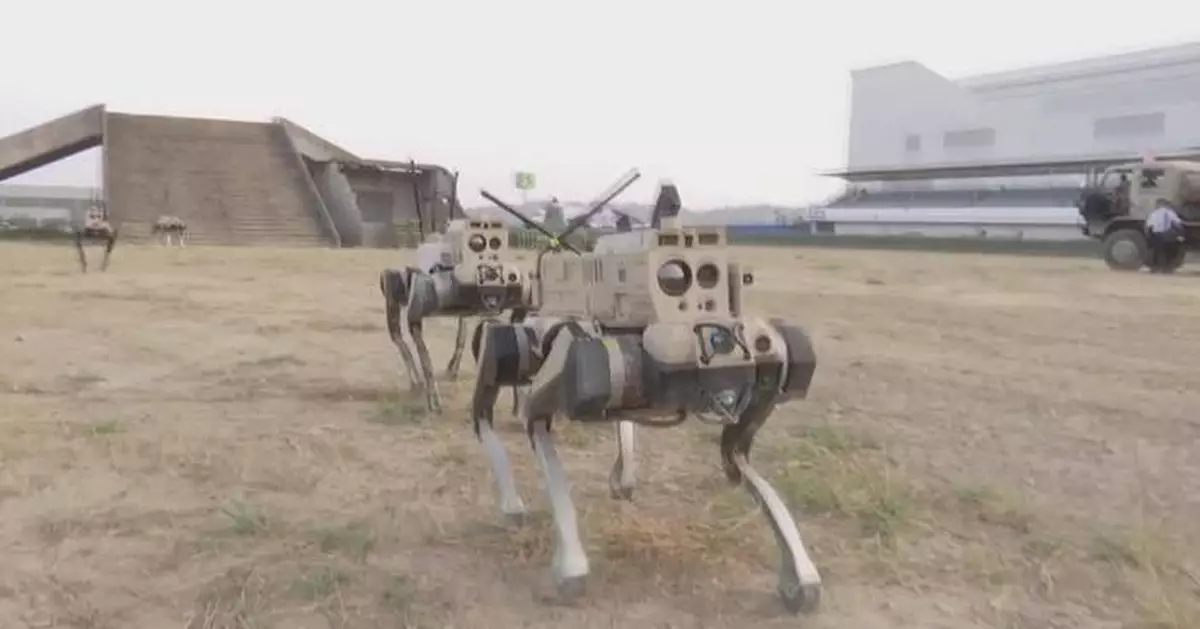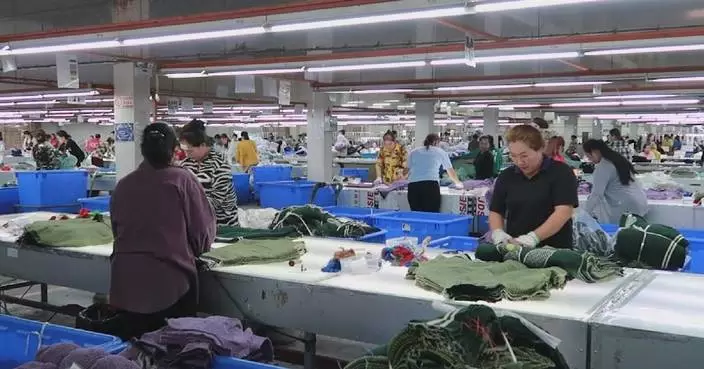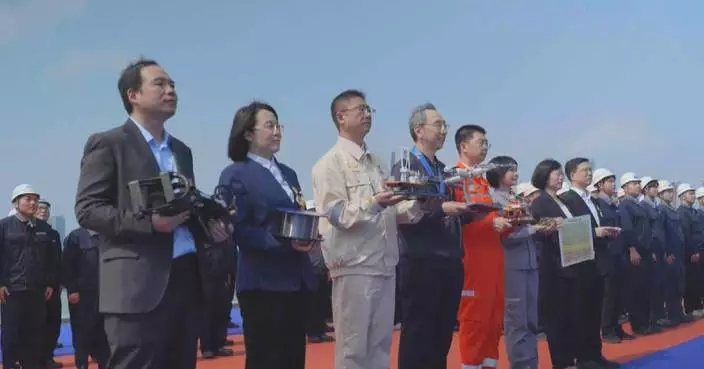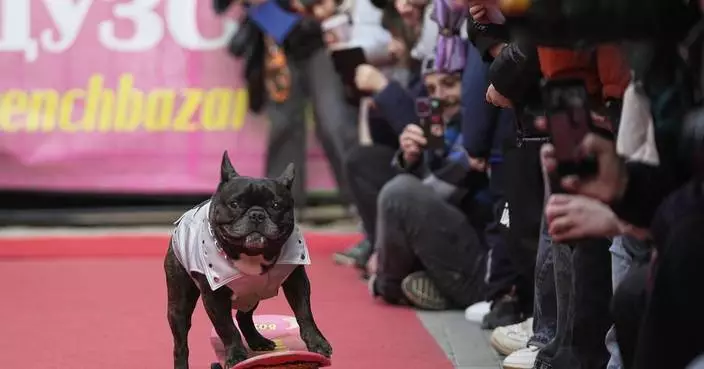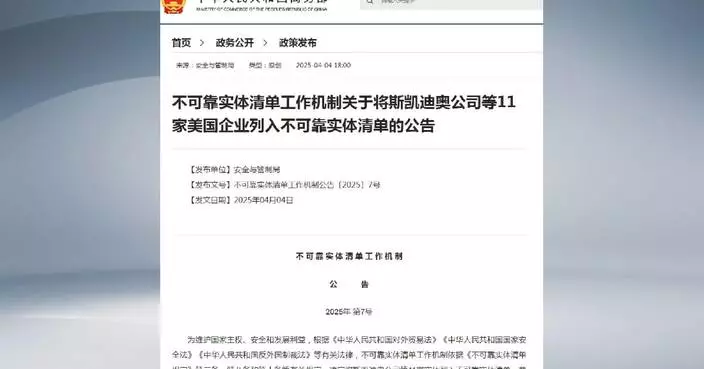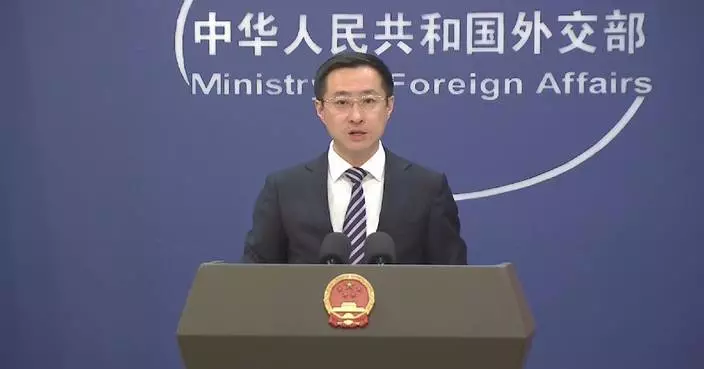A host of futuristic robotic wolves caught visitors' eye on Thursday at the ongoing 15th China International Aviation and Aerospace Exhibition, also known as Airshow China, in Zhuhai, a port city in south China's Guangdong Province.
The pack consists of four different robotic wolves, which can undertake versatile tasks. One wolf is equipped with reconnaissance equipment that can operate on the front lines.
The comprehensive supporting wolf is tasked with transporting ammunition supplies. The remaining two wolves are armed with firearms that can serve as the primary combat forces.
According to the engineers, these steel warriors possess powerful collaborative capabilities, and can carry out complex missions in various scenarios, including urban streets, factories and mines.
Together with a central control vehicle, the whole pack can reach a combat radius of up to two kilometers and a battery life of three hours. "At the current stage, the robotic wolves have evolved from individual intelligence to group intelligence.
When carrying out tasks, we can quickly deploy different types and quantities of robotics according to various needs to meet battlefield requirements," said Liu Zhe, a representative of China South Industries Group Corporation (CSGC).
Compared to the commonly known robotic dogs, these wolves adopted the concept of group combat, enabling "human-vehicle-wolf" interconnection, ensuring information sharing and dynamic autonomous coordination.
After rigorous training on various terrains, these robotic wolves have proven their reliability and adaptability. They excel not only in military applications, but also hold broad prospects for civilian use.
Designed with a focus on adaptability to urban terrains, these robotic wolves can easily navigate stairs, overcome obstacles and trenches, which conventional robots find challenging. "There are numerous civilian applications as well, such as firefighting emergencies, industrial and chemical factory inspections, and safety checks in hazardous environments," said Liu.
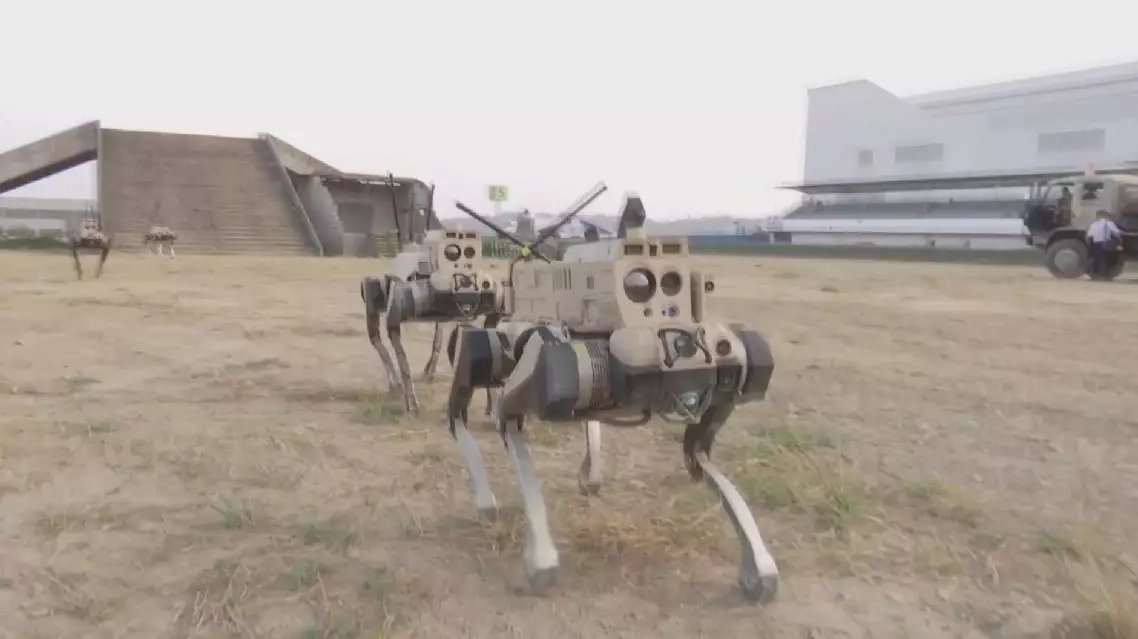
Robotic wolves capture widespread attention at ongoing Airshow China
The sixth edition of Shanghai's iconic "5·5 Shopping Festival" kicked off on Thursday, alongside the 2025 International Consumption Season, in a renewed push to boost domestic demand and revitalize consumer spending.
Co-hosted by the Ministry of Commerce, China Media Group (CMG), and the Shanghai Municipal Government, the event promises a vibrant mix of promotional campaigns, themed events, and immersive retail experiences across the city's commercial districts.
Centering on the theme "Quality Consumption, Demand Creation," the festival targets four key consumer sectors: services, big-ticket purchases, inbound spending, and emerging consumption trends. It also highlights new economic frontiers such as the debut economy, the silver economy, the nighttime economy, and the ticket-based economy—aimed at unlocking consumer potential and enhancing Shanghai's commercial vitality through new product launches, senior-friendly services, dynamic nightlife, and spending on cultural activities.
The festival launch ceremony also included the Fourth International Consumption Center City Forum. In a video address, Marwan Ahmed Bin Ghalita, Acting Director General of Dubai Municipality, expressed hopes for deeper cooperation between Shanghai and Dubai as the two metropolises mark the 25th anniversary of their sister-city relationship. He emphasized their shared vision for urban development and prosperity.
Another highlight of the festival was the debut of the "CMG Select: Shanghai Pavilion." Combining celebrity hosts, culture, art, and premium brands, the pavilion leverages CMG's influential media platform to energize consumer activity and support Shanghai's drive to become a world-class consumption center.
The shopping festival will run through the end of June, with over 1,000 companies and thousands of brands set to launch more than 1,000 special events.
The 2025 International Consumption Season is a flagship event under the "Shop in China" campaign. Jointly launched by the Ministry of Commerce and five other government departments, the initiative will mobilize regions across the country to spotlight premium international and domestic goods. It will feature product debuts, first launches, and consumer-friendly measures to help both domestic shoppers and inbound tourists access high-quality global merchandise and enjoy top-tier services.

Shanghai launches major shopping festival to boost consumer spending



